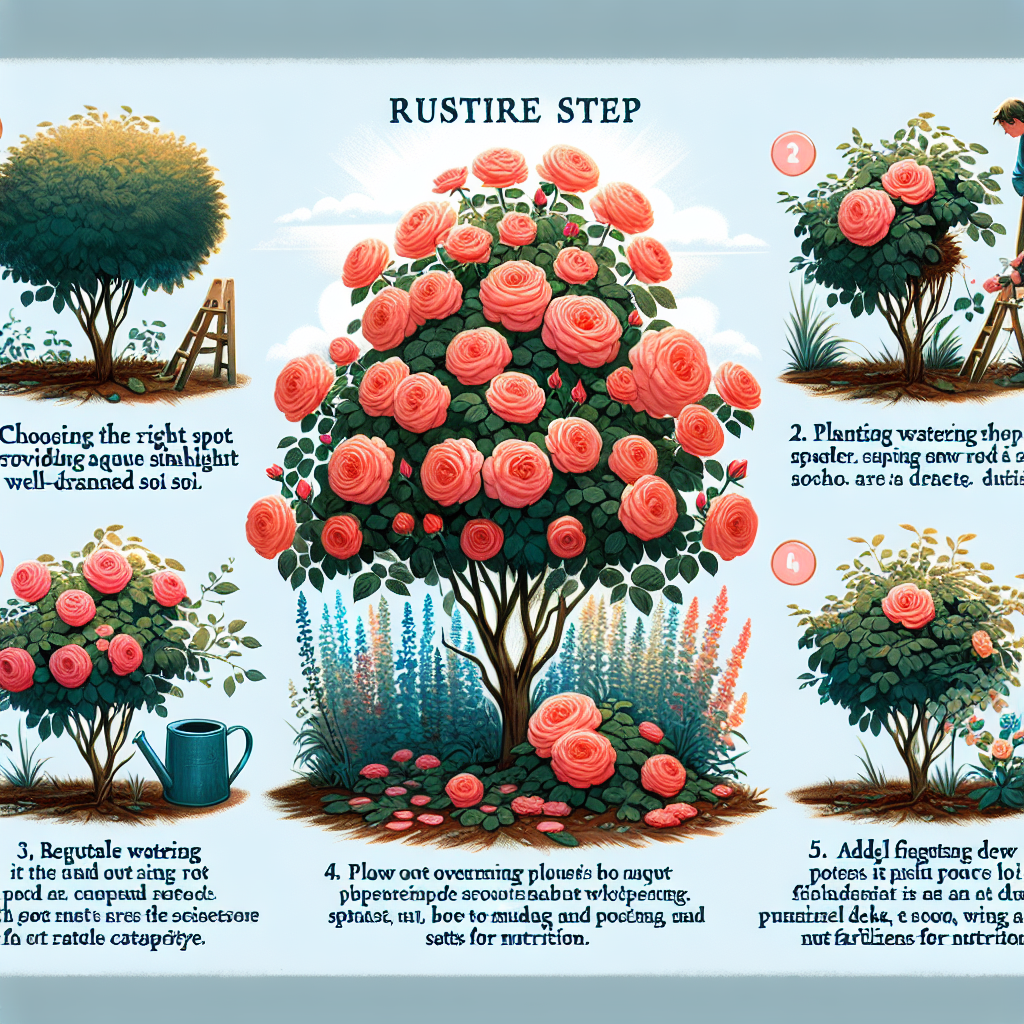
How to care for shrub roses
How to Care for Shrub Roses: A Comprehensive Guide
Shrub roses are a fantastic addition to any garden, providing beauty, color, and fragrance. These hardy plants are relatively easy to care for, making them suitable for both novice and experienced gardeners alike. While they are resilient, understanding the specific needs of shrub roses will ensure they thrive and flourish. This guide will cover watering, fertilizing, pruning, pest management, and general upkeep to keep your shrub roses healthy and vibrant.
Understanding Shrub Roses
Shrub roses are a diverse group of roses that combine the characteristics of both modern and old garden rose varieties. Known for their dense foliage and compact growth habit, these roses can thrive in various climates and soils. They come in multiple colors and sizes, making them versatile for different landscape designs. Here are a few key points to understand about shrub roses:
- They are self-supporting, so they don't require trellises or supports like climbing roses.
- Most varieties are disease-resistant, making them easier to maintain.
- They bloom continuously throughout the growing season, offering long-lasting floral displays.
Location: The Right Spot for Your Shrub Roses
Choosing the right location is crucial for the health of your shrub roses. Here’s what to consider:
- Sunlight: Shrub roses should be planted in a location that receives at least 6-8 hours of direct sunlight each day. This exposure encourages robust growth and abundant blooms.
- Soil: Well-draining soil is essential. Consider mixing compost or well-rotted manure into your garden soil to improve its structure.
- Air circulation: Plant your roses with adequate spacing to ensure good air circulation, reducing the risk of diseases.
Watering: Keeping Your Roses Hydrated
Watering is one of the most critical aspects of how to care for shrub roses. Here are some essential tips to follow:
- Deep Watering: Water deeply but infrequently to encourage deep root growth. Aim for about 1-2 inches of water per week, depending on weather conditions.
- Morning Routine: The best time to water is in the early morning to allow foliage to dry throughout the day, minimizing fungal diseases.
- Soil Checking: Check the soil moisture before watering. If the top inch of the soil feels dry, it’s time to water.
Fertilizing: Boosting Growth and Blooms
To promote healthy foliage and vibrant blooms, fertilizing is essential. Here's how to effectively nourish your shrub roses:
- Type of Fertilizer: Choose a balanced, slow-release fertilizer with equal parts nitrogen, phosphorus, and potassium.
- Timing: Apply fertilizer in the spring as new growth begins and again in mid-summer to sustain energy levels for blooming.
- Application: Follow the package instructions for application rates. Avoid over-fertilization, as it can lead to excessive foliage growth and fewer flowers.
Pruning: Shaping Your Shrub Roses
Pruning is vital to maintaining the shape and health of your shrub roses. Proper pruning encourages new growth and helps prevent disease. Follow these steps:
- When to Prune: The best time to prune shrub roses is in early spring when the plants start to leaf out but before they bloom.
- Tools Required: Use sharp, clean pruning shears to make precise cuts.
- Pruning Technique: Remove any dead or damaged wood. Cut outward-facing stems to promote an open center for better air circulation.
Pest Management: Keeping Your Roses Safe
Like all plants, shrub roses can fall victim to pests. Here’s how to manage them effectively:
- Common Pests: Watch for aphids, spider mites, and Japanese beetles.
- Natural Remedies: Use insecticidal soap or neem oil to treat infestations, applying it in the early morning or late afternoon to prevent sunburn on the leaves.
- Encouraging Beneficial Insects: Planting a diverse array of flowers nearby can attract beneficial insects that reduce pest populations.
Disease Management: Ensuring a Healthy Garden
Shrub roses may be susceptible to certain diseases, even if they are generally resistant. Here are strategies to manage common problems:
- Black Spot: A fungal disease that causes black spots on leaves. Improve air circulation and avoid overhead watering. If needed, use a fungicide.
- Powdery Mildew: Appears as a white powdery coating on leaves. Maintain proper watering practices and increase airflow.
- Rust: Looks like orange or rust-colored spots on the leaves. Prune affected areas and remove any fallen leaves from the ground to prevent spread.
Mulching: Benefits for Health and Growth
Applying mulch around your shrub roses can offer multiple benefits:
- Moisture retention: Mulch helps retain soil moisture, reducing the frequency of watering.
- Weed suppression: A layer of mulch can inhibit weed growth, allowing your roses to thrive without competition.
- Temperature regulation: Mulch keeps the soil temperature more consistent, which can benefit root health.
Winter Care: Preparing for the Cold Months
As winter approaches, take preventative measures to protect your shrub roses from harsh conditions:
- Pruning: Lightly prune your shrub roses in late fall, removing any dead or weak branches.
- Mulching: Apply an extra layer of mulch around the base of the plants to insulate the roots during freezing temperatures.
- Covering: In extremely cold climates, consider covering the base of the plants with burlap or similar material for added protection.
Conclusion: Enjoying the Beauty of Shrub Roses
As you learn how to care for shrub roses, remember that consistent attention to their needs will reward you with stunning blooms and lush foliage. Proper watering, suitable fertilization, effective pruning, and vigilant pest management will ensure that your shrub roses become a flourishing part of your garden. With a bit of dedication, you can create an enchanting floral display that beautifies your outdoor space for years to come.
“Roses are the most beautiful of all flowers, but like any great beauty, they require care and effort." - Unknown
So, take these tips to heart, and get ready to enjoy the delightful charm of your thriving shrub roses!
```By Guest, Published on September 25th, 2024